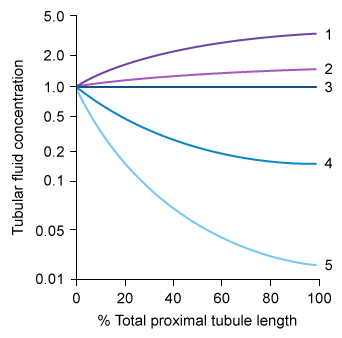Scientists studying the specifics of human kidney function develop a new technique for measuring the concentration of various compounds along the length of the proximal tubule. They measure the concentrations of several endogenous substances in the fluid traversing the proximal tubule during an experiment. The following image depicts the tubular fluid/plasma ultrafiltrate concentration ratios for the measured substances:  Which of the following substances are most likely to produce lines 2 and 4, respectively?
Which of the following substances are most likely to produce lines 2 and 4, respectively?
Definitions:
Visual System
The part of the central nervous system which enables individuals to process visual detail, it includes the eye, retina, optic nerves, and brain visual cortex.
Depth Perception
The ability to perceive the visual world in three dimensions and to judge the distance of objects accurately.
Three Dimensions
The state or quality of having three measurements: length, width, and depth, used to describe the physical world and represented in geometry, design, and spatial understanding.
Figure-Ground Relationship
The principle by which we organize the perceptual field into stimuli that stand out (figure) and those that are left over (ground).
Q2: Which of the following are functions of
Q5: You are a nurse who is working
Q14: A 66-year old man comes to the
Q59: A65-year-old man is brought to the ER
Q94: A 72-year-old man is brought to the
Q159: A 45-year-old woman is examined two weeks
Q318: A 42-year-old man with swollen legs shows
Q326: A 22-year-old man comes to the clinic
Q393: An 82-year-old woman with dementia who resides
Q476: A 23-year-old asian female is brought to